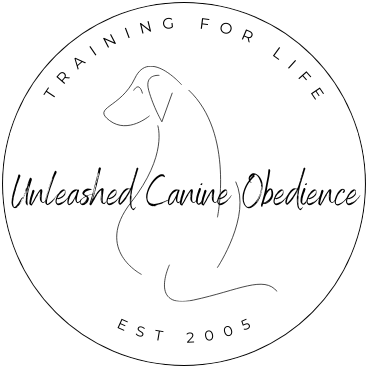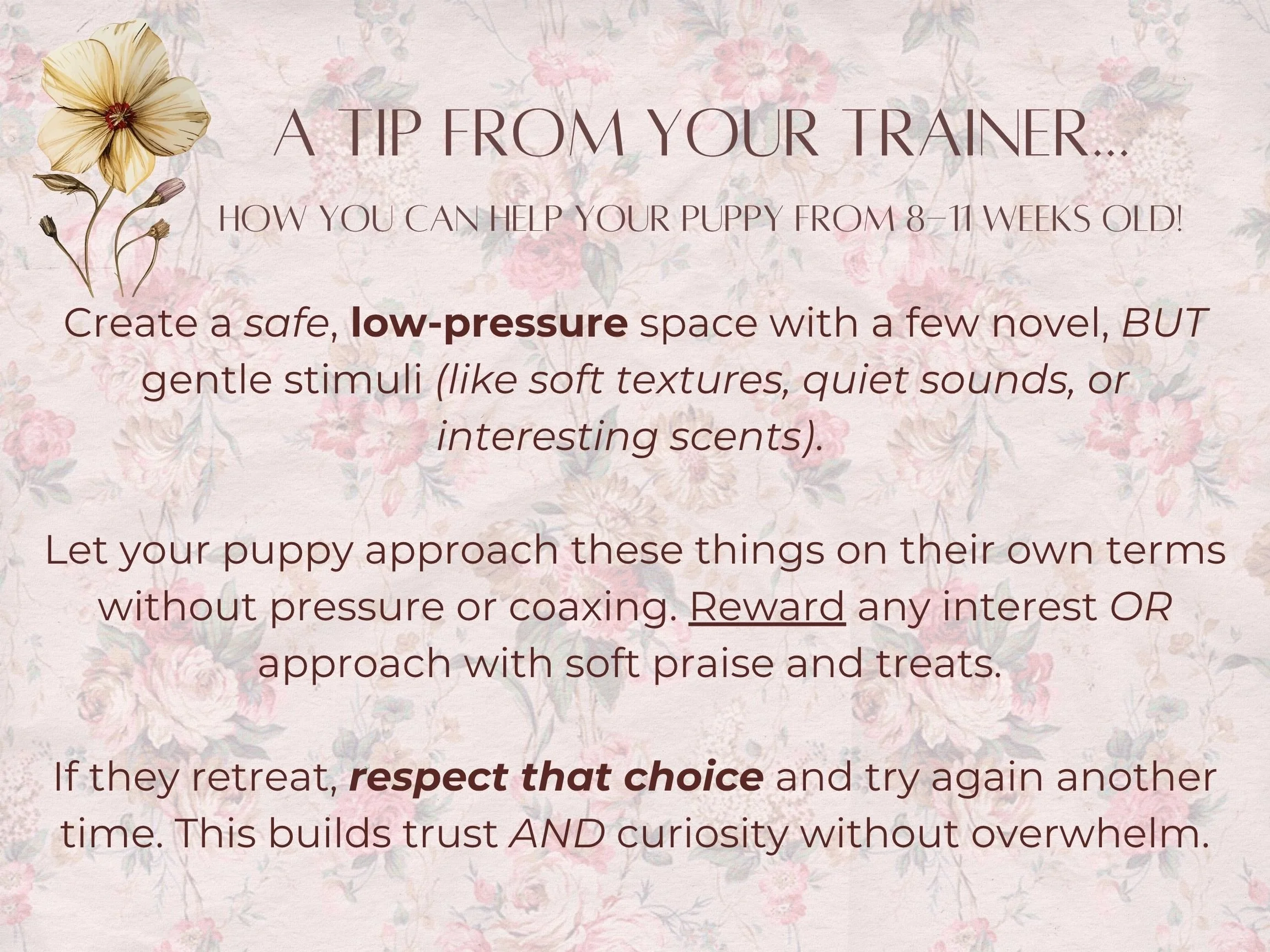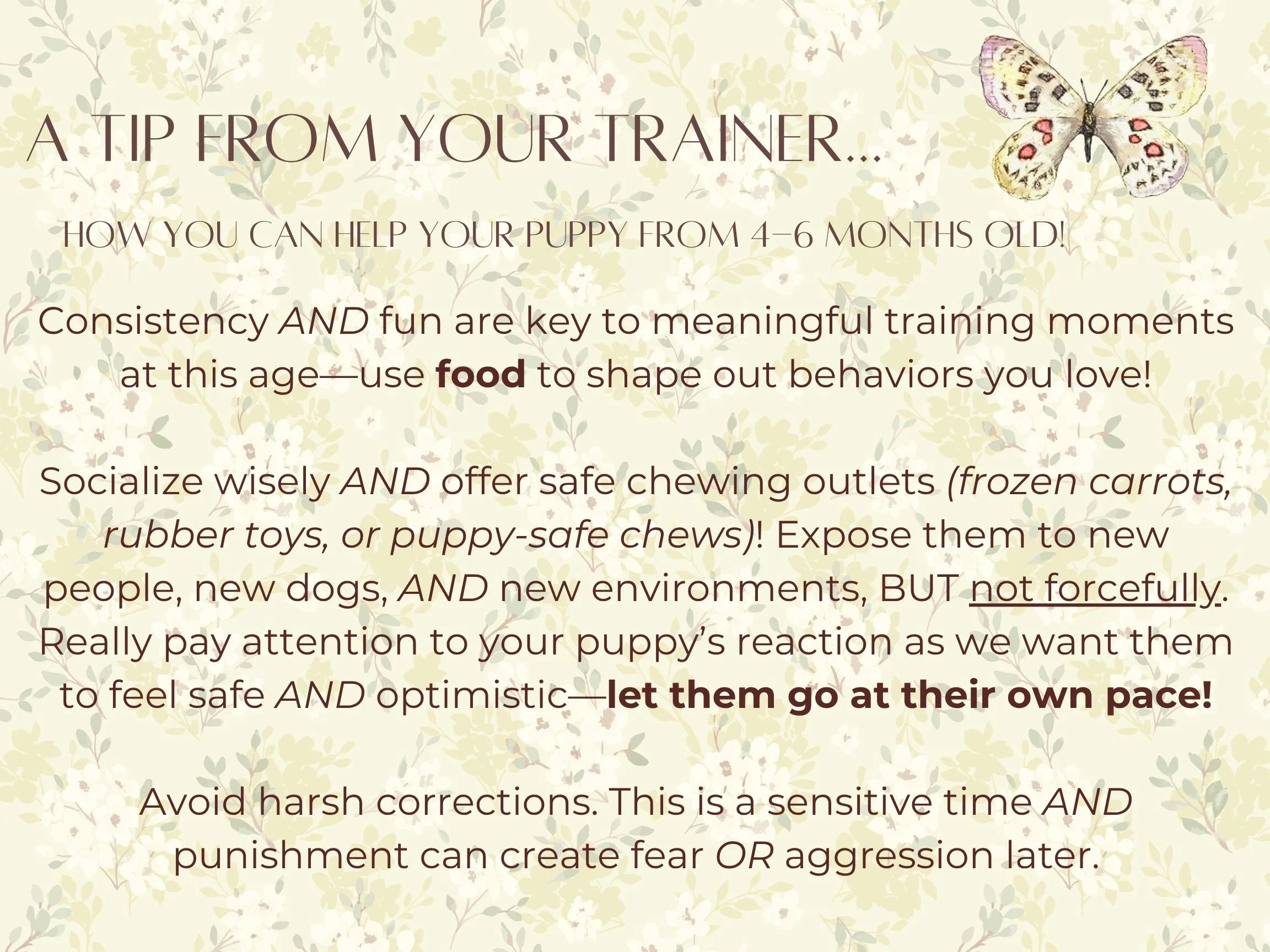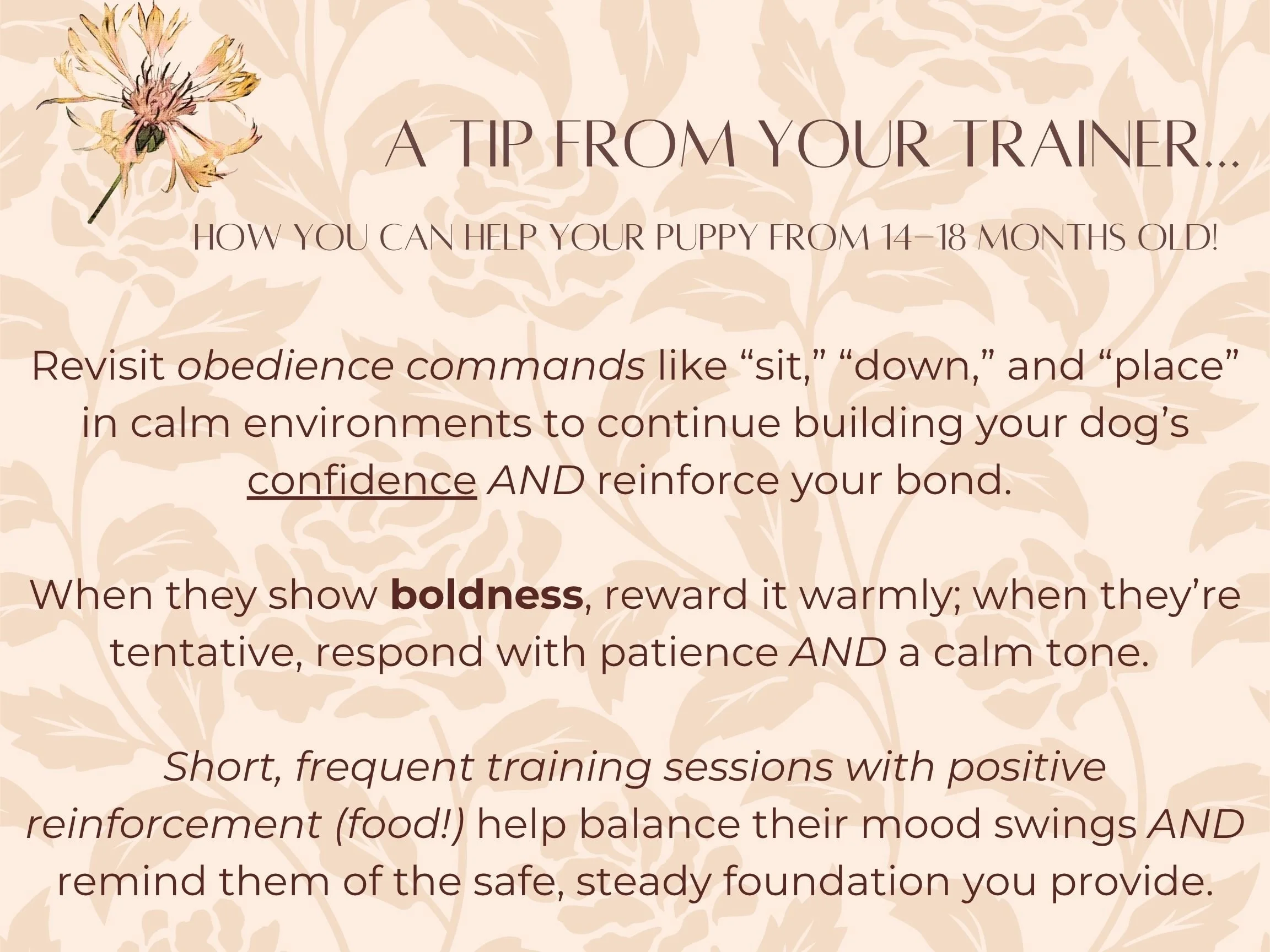It’s Just a Phase
(And You’re Doing Great!)
There are mornings that remind you just how far your puppy has come. They bound out of the crate with a wagging tail, eager to see what the day holds. On walks, they move with curiosity and ease — passing barking dogs without worry, leaning happily toward kids who ask to pet them, and lighting up when new people say hello. The training shows in small but powerful ways: they wait patiently at crosswalks, glance back to you for reassurance, and bounce back quickly when something unexpected happens. Whether it’s climbing into the car for an outing, weaving through a busy park, or curling up content after play, they carry themselves with the steady confidence you’ve worked so hard to nurture.
And then there are mornings that seem to come out of nowhere. Your confident pup, who usually strides past anything, suddenly freezes at the sight of the recycling bin, or refuses to walk past a fire hydrant they’ve ignored a hundred times before. The puppy who once greeted the world with optimism now tucks their tail and hesitates. You’ve been steady with training from the start, and you know how much progress they’ve made — but in that moment it can feel as if all that work has slipped away. You can’t help but wonder: What changed? Did I do something wrong?
You didn’t.
Some of these shifts can seem confusing—but they’re actually a normal part of development called fear stages—or fear periods. Fear stages are your dog’s nervous system doing its best to adapt to a rapidly changing world. And while it can feel frustrating or even heartbreaking, these stages are a meaningful chance to deepen your relationship, build trust, and teach your dog that their world can still feel safe—even when it doesn’t look the same.
Let’s explore some of these developmental stages—when and what shows up and how to meet your dog with steadiness and grace. Whether it’s early morning before the house wakes and you’re sitting in your kitchen having tea, or you’re hiking lost in the woods with dirt under your fingernails, or standing on a busy sidewalk in the city with your puppy pressed against your leg trying to make sense of a world that suddenly feels too loud, too fast, and too much, developing an understanding of each fear stage will give you the tools you need to support your puppy however they need.
Calmness Under Construction
From a developmental standpoint, fear stages are like emotional growth spurts. Your puppy’s brain is changing fast—rewiring, testing, adapting. And sometimes that means the world can suddenly feel...off.
The same tree stump they sniffed yesterday might now feel dangerous. A loud sound that didn’t bother them before now sends them running. Stranger danger seems to rear its head. This isn’t bad behavior—it’s just their nervous system doing its job!
If we can gently support them as they move through these stages, it helps our dogs reach their full potential. These moments can become the foundation of lasting confidence—like braving a storm inside a tent you’ve pitched together.
8–11 Weeks: Baby Eyes, Big Feelings
They just got here. Everything is new. They want to be brave, but their body says “maybe not.”
Between 8 and 11 weeks, puppies are seeing the world with fresh, curious eyes and feeling big emotions they’re still learning to navigate. Everything around them is brand new and sometimes overwhelming. While they want to be brave and explore, their little bodies often send signals of uncertainty or hesitation. This is a gentle time to let them choose when to step forward and when to hold back. By honoring their pace, rewarding even the smallest sparks of curiosity, and staying soft and patient with them, we help build a foundation of trust and confidence that will carry them through every stage ahead.
Let them opt in. Reward their curiosity. Stay soft. Also, keep in mind that puppies have not had all their recommended vaccinations at this point, so we are really just letting them be in our spaces at the beginning—our home and our yard! That gives you the best chance of keeping them safe and healthy during this first stage as their immune systems develop and your focus is helping your puppy learn to navigate the home environment before we move on to more challenging environments.
4–6 Months: Teething and Testing
Between 4 to 6 months, puppies go through a key developmental stage called the "juvenile stage" (sometimes referred to as the pre-adolescent stage). It’s a time of rapid physical growth, increasing independence, and important social learning. Puppies become more curious, confident, and test boundaries more. Their stamina increases and they’ll likely want more activity and mental stimulation at this point.
Between 4 and 6 months, puppies go through a challenging phase of teething and testing boundaries. Their bodies and minds are changing rapidly, and the world can suddenly feel uncomfortable or “itchy” to them. Places and things they once enjoyed might now feel unfamiliar or even unsettling. During this time, it’s important to slow down your pace when needed and give your pup extra time to take in their surroundings. Instead of rushing through busy and unpredictable spots like dog parks, choose quieter, calmer paths where they can explore at their own speed. This gentle approach helps them feel safe and supported as they work through these big changes.
Go slower. Let them look longer. Skip the loud and rowdy dog park and find a quiet path instead. It’s really important in this stage to avoid other animals that might bully or create a scary interaction.
9 Months: Hormones + Heart
They're growing up. And just like teenagers, everything feels a lot. Mood swings. Barking at nothing. Doubting people and things they knew before.
At around 9 months, your dog is stepping into the next stage of adolescence—a time when hormones kick in and emotions run high, much like a human teenager. Even dogs that have been spayed or neutered before this stage will feel like everything is intensified: mood swings, sudden barking at seemingly nothing, and second-guessing things they once felt sure about. It can be a confusing and sometimes a frustrating phase for both of you. This is the moment to take a deep breath, soften your tone, and stay consistent. Showing up with calm patience and steady support helps your dog navigate these ups and downs with confidence, building a stronger bond that will carry you through to adulthood together.
This is where you breathe deeper, talk softer, and keep going.
10–14 Months: What Even Is This World?
You might think you're back at square one. It’s okay. You’re not.
Between 10 and 14 months, your dog is continuing to grow and change, often feeling like they’re seeing the world all over again—sometimes in confusing or overwhelming ways. You might feel like you’re back at square one some days, facing challenges you thought you’d already overcome. But that’s completely normal, and it doesn’t mean progress has been lost. During this time, it’s important to give your dog space to retreat when they need to and some freedom to choose how and when to engage with their environment. Instead of pushing them to be brave all the time, try focusing on creating a sense of safety and trust. By building a secure foundation, you help them develop confidence that lasts far beyond this stage. And, when they seem calmer and are feeling safe, provide a challenge to see if they approach it more confidently this time!
When they seem fearful of something, let them retreat to a safer distance and let them observe. When they seem curious of something, let them choose. Don’t force courage—create safety.
14–18 Months: Not a Puppy, Not Quite an Adult Dog
Some days they’re bulletproof. Other days they flinch in the shadows. Honor both. Go back to basics when you need to.
Between 14 and 18 months, your dog is nearing adulthood but is still very much learning and growing. Some days they seem unstoppable—full of energy and confidence, invincible—while other days they might shy away from shadows or surprises, reminding you they’re still figuring things out. It’s important to honor both sides of this journey: the boldness and the vulnerability. This is a great time to revisit the basics and reinforce the foundation you’ve built together. Remember, they’re almost through this intense phase of development, and so are you. With patience and consistency, you’ll both come out stronger on the other side.
They’re almost through. You are too. Remember to take plenty of moments to notice and appreciate the journey though.
Let’s Call Them Growth Stages
Because the truth is: the most powerful thing you can offer your dog at the end of the day isn’t control. It’s safety. Presence. Choice. Shaping out and supporting behavior that is curious, optimistic, and resilient will give you a dog that is a pleasure to be around—for you and others!
Fear stages don’t mean you’ve failed. They mean your puppy is growing—and you’re learning how to grow with them.
Whether you're folding laundry while your dog naps nearby, or camping with your dog under a sky full of stars, remember: you’re not alone. And you don’t have to guess your way through this!
Training should listen first and honor who your dog is, not just what they do. If things feel uncertain, we’re here to help!






